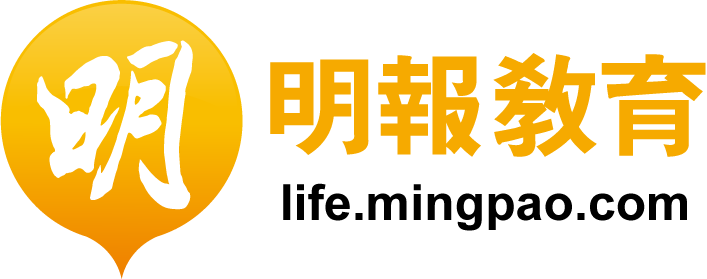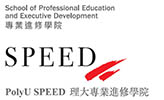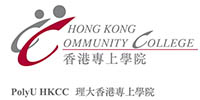雙語社評齊齊聽
[英語 (足本收聽)] Presented by Dr KWOK, Yuk-yin Frieda, Lecturer of Hong Kong Community College, The Hong Kong Polytechnic University
[普通話 (足本收聽)] Presented by Dr QIU, Wei Tina, Lecturer of Hong Kong Community College, The Hong Kong Polytechnic University
Hong Kong has returned to normal after the pandemic, and the tourism industry is beginning to regain vitality. However, the chaos much criticised prior to the pandemic has also made its way back.
Around To Kwa Wan and Hung Hom, flocks of mainland tour groups form long queues on the street every day as they wait to enter designated restaurants for meals. Such poor arrangements give the tourists a bad experience and leave them with a poor impression of Hong Kong. The crowded streets also disrupt the life of residents in the area. If things go on like this, it will certainly cause resentment.
The SAR government and the Travel Industry Authority have emphasised that they will straighten out the matter and divert the tour groups [to other timeslots and districts]. However, Hong Kong is a tiny place with a limited capacity for serving tourists. The related problems cannot be solved by simply strengthening the management [of tours].
Before the pandemic, the overreliance of Hong Kong's tourism industry on shopping resulted in twisted practices in the sector. The chaos of zero-fee tours, forced shopping, etc. continuously undermined the reputation of Hong Kong tourism. The profit model that focused on quantity over quality brought huge tourist inflows, disrupting the life of residents in the districts and arousing the resentment of local people. If the tourism industry wants to go a long way, it must pursue reforms to eradicate long-standing malpractices, find new selling points and solicit support from the locals.
Designated shopping and dining for mainland budget tours were long concentrated around To Kwa Wan and Hung Hom before the pandemic. According to an industry insider, Hung Hom and To Kwan Wan used to have five to seven restaurants offering group meals. They nevertheless shut down one after another during the pandemic, when the number of tourist groups was zero. With only two in business now, this leaves tour group members in long queues for meals as a result, he explained. By this, he implied that it is a bottleneck issue in the initial phase of the tourism reboot. Sometime later, the supply will have caught up and the situation will improve. The government shares a more or less similar view, hopeful that once all parties manage their parts better, tourists will be less likely to beset residents in their daily lives.
But as the authorities and the tourism sector said, right now, the restoration of normality has only just begun. The number of tour groups visiting Hong Kong may increase in the future. The tourism sector and some district councillors have proposed to divert tour groups to the Yau Tsim Mong district. This is just a way of passing the problem to other neighbourhoods. The authorities and the sector must face the real crux of the problem squarely — Hong Kong can no longer proceed with the tourism development model of "success through quantity" and making quick money.
Hong Kong is a small and densely populated place. Its capacity is limited. The number of mainland budget tours before the pandemic was so huge that it was too much to bear. Furthermore, the quantity-over-quality model of budget tours is also unhealthy and may easily lead to many bad practices. Now that the city's tourism industry is regaining its feet in the wake of the pandemic, it should not go down the old path again. When the invisible hand of the market fails to contribute to the long-term interests of society effectively, the government should intervene forcefully.
The problem of budget tours is a by-product of tourism that places like South Korea, Taiwan, Hong Kong and Thailand all face. Seven years ago, South Korea rolled out an elimination system to curb the chaos of low-cost tours that violated regulations. In Taiwan, the tourism sector had already established a set of regulations requiring a "minimum charge for tour groups" 10 years ago. In recent years, more and more countries and cities have introduced measures like tourist taxes and arrival taxes, which are intended to reduce the number of tourists from surrounding areas or to use the relevant tax income as some sort of compensation for the neighbourhoods affected by the influx of tourists. These methods are equally worthy of reference.
低價團亂象故態復萌 旅遊業莫再「重量輕質」
香港疫後復常,旅遊業重現生機,但疫前屢惹詬病的亂象也故態復萌。
土瓜灣及紅磡一帶,天天都有大批內地團團友排長龍,等候進入指定食肆進膳,安排不周影響團友旅遊體驗,對香港留下不好印象;街頭擠滿人群,影響區內居民,長此下去,必惹怨懟。
特區政府和旅監局強調會理順安排,分流團友,然而香港彈丸之地,接待旅客容量有限,有關問題實非加強管理就能解決。
疫前香港旅遊業過度側重購物,行業生態扭曲,零團費、強迫購物等亂象,不斷透支香港旅遊聲譽;重量輕質的盈利模式,帶來大量客流,影響地區居民生活,惹來本地人憎厭。旅遊業要「長做長有」,必須改革積弊,賣點要推陳出新,更要爭取本地人支持。
疫前內地低價團定點購物及用餐,本來便集中在土瓜灣及紅磡一帶。根據業界說法,以往紅磡及土瓜灣有5至7間食肆提供團餐,但疫下團客「清零」,多間店舖相繼結業,現時只得兩間營業,導致團友排長龍候餐,意即這是旅遊業復常初期的瓶頸問題,假以時日,供應追上了,情况便可改善。政府看法也大致相似,認為各方管理做得更好,民生影響可望減少。
惟正如當局和業界所言,現在復常只是剛剛起步,來港旅行團數目,未來可以增加;業界和區議員建議將團客分流到油尖旺,不過是將問題轉嫁其他地區。當局和業界必須直面問題真正核心,即香港不能繼續走「以量取勝」賺快錢的旅業發展模式。
香港地小人多,容量有限,疫前內地低價團數量之多,實在吃不消,而低價團重量輕質的模式亦不健康,容易衍生很多流弊。本港旅遊業疫後重生,不應該再走老路。當市場無形之手無法有效促進社會長遠利益,政府就應該強力介入。
低價團問題是旅遊業的副產品,由韓國、台灣、香港到泰國等,莫不如此。韓國7年前提出淘汰制,打擊低價團違規亂象;在台灣,業界10年前便有「最低團費」規定。近年愈來愈多國家及城市引入遊客稅、入境稅一類措施,希望減少來自周邊地區的旅客,又或將相關稅收,用於受大量遊客湧入影響的社區,作為某種補償。這些做法同樣值得參考。
明報社評 2023.03.29









